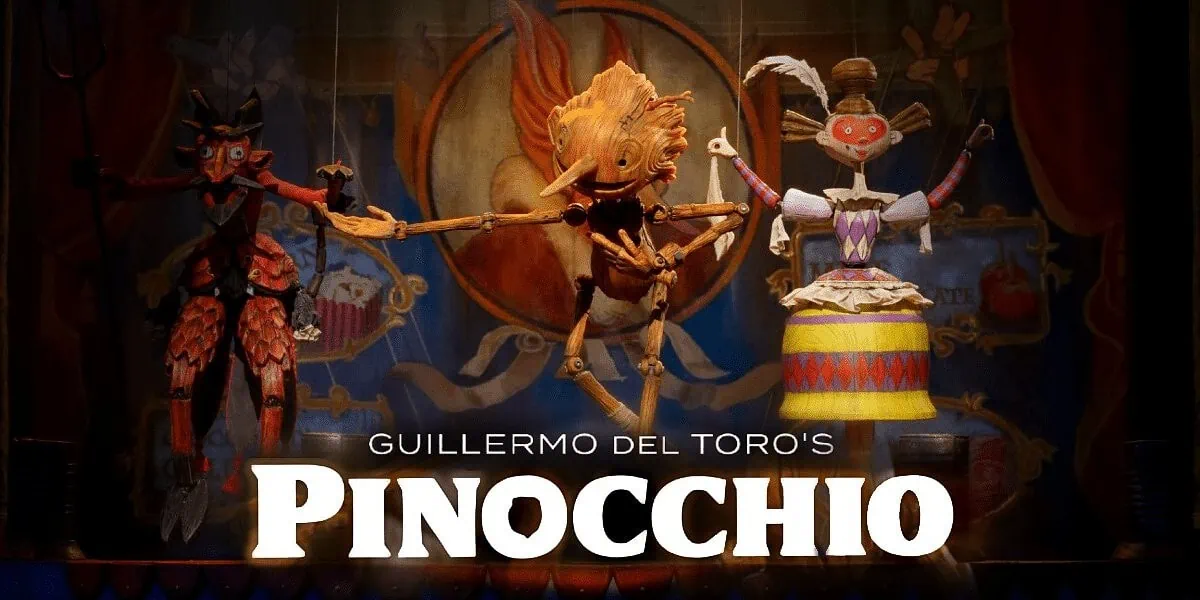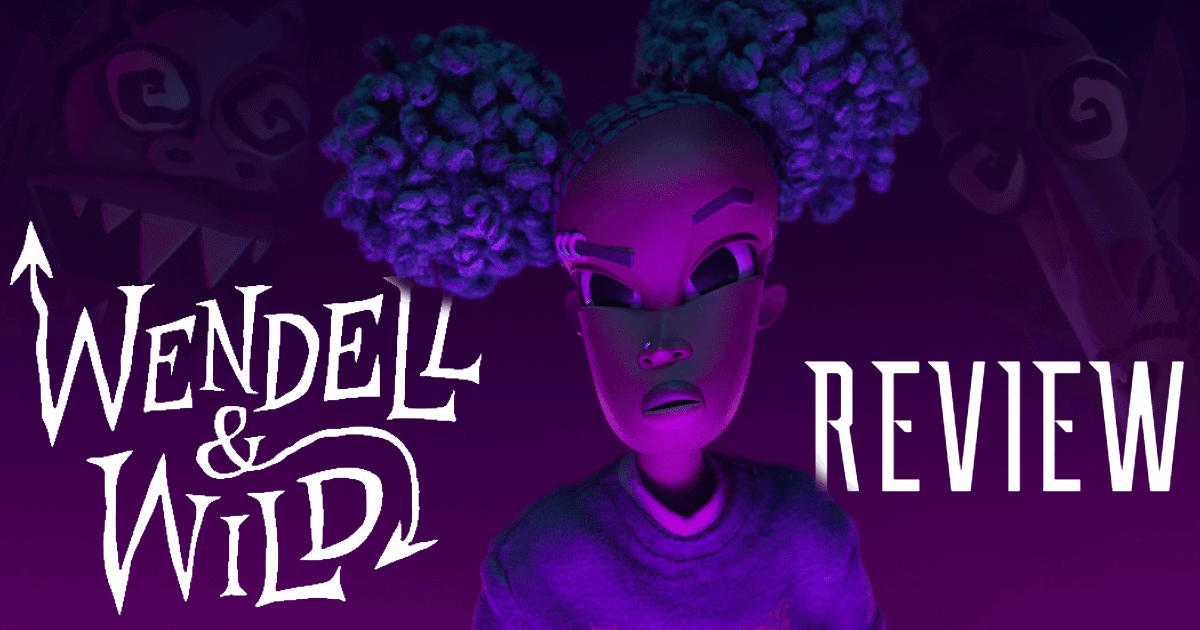Guillermo del Toro’s Pinocchio embraces the darkest, most monstrous parts of humanity… and the warmest, most beautiful, the most poetic. This is a film that gracefully transcends generational lines with a pointed message for each target audience. This movie is powerful for kids, for adults, for humans.
The entire saga of birth and death, rebirth and legacy, love and hate, selfishness and self-sacrifice – the entire scope of human life is packaged in a little story about the misadventures of a silly wooden puppet. After a lifetime of development by Guillermo del Toro, Pinocchio is one of the best films of the year, one of the best films of del Toro’s career, and one of the best stop-motion films ever made. A stunning, masterful achievement.
[Spoilers below for Guillermo del Toro’s Pinocchio, now streaming on Netflix]
The animation of Pinocchio
Directors del Toro and Mark Gustafson are very intentional with when they want the stop-motion to show and when they want to conceal it. Netflix’s Wendell & Wild is still fresh in my mind, and I think those filmmakers used minimal CGI for most of their movie, so the difference was immediately apparent to me in Pinocchio. Wendell & Wild intentionally lets the audience see “imperfections” like the different mouth shapes as the characters are talking. You can see that they’re using different pieces for the movements, and it adds a certain charm to the movie.
In contrast, I believe Pinocchio uses CGI to clean up certain movements and add additional environmental effects. While it maintains the iconic stop-motion look, the combination is very smooth in the final film, creating an immersive realistic experience. Even Pinocchio’s fingers move flexibly, as if they’re really alive and bending, which adds a sense of unnerving realism when juxtaposed with some of the other movements in the frame.
A key example of this intentional contrast is how the cameras are moving on “ones” (camera moves every frame) but the characters are animated on “twos” (characters move every two frames). The result is that the audience’s perception of the world remains natural and immersive, as our experience is dictated by the movement of the camera.
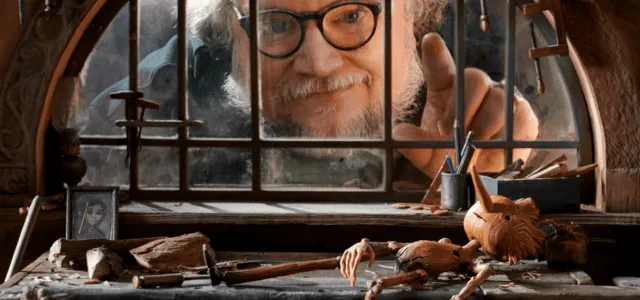
We are moving through the sets as we normally would in any movie, giving our perception of the experience a sense of familiar realism. However, the characters are moving at half the frame rate, giving the iconic “choppiness” of stop-motion. They could have masked this with CGI or simply filmed the characters on ones, but they chose to have this effect to continually remind the audience that the characters themselves are real puppets that have been brought to life through the magic of filmmaking.
As opposed to 2D animation or live action, presenting Pinocchio in fluid, beautiful stop-motion with real physical puppets creates a magical in-between experience that marries the “anything can happen” freedom of animation with the tangibility of the real world.
The puppets of Pinocchio
The puppets themselves were simply magnificent and are designed in a way that reflect the film: crafted with a sense of childlike wackiness that’s brought to life with profound artistry and a mature sense of detail and care. These are figures I’d love to study on a table. If I hadn’t seen this movie, I wouldn’t even be able to dream of seeing them brought to life like this. The puppets of Pinocchio are immaculate, exceptionally designed, and made, and re-made for each new expression and story point.
I was obsessed with the colors, expressions, and details in the textures and linework. Each scene felt alive with their movements and expressions. I was especially impressed by the changes for the different character variants. Two of my favorite examples are when Geppetto is traveling to find Pinocchio, his whole face is ragged and his eyes are black; and when Pinocchio is performing, he’s exhausted but puts on an actor’s smile. I’m stunned how the filmmakers were able to use body language to give full emotional expression to Sebastian the Cricket and to the Spirits, three major characters who don’t have normal faces for visual communication.
I loved so many other details in the animation too. One of my favorite details in stop-motion is playing with scale, and noticing the extra details (or lack of!) in miniature or giant-size character pieces. In Pinocchio, this is especially useful for the scenes with the Cricket, who has to operate at a different sense of scale than the other characters.
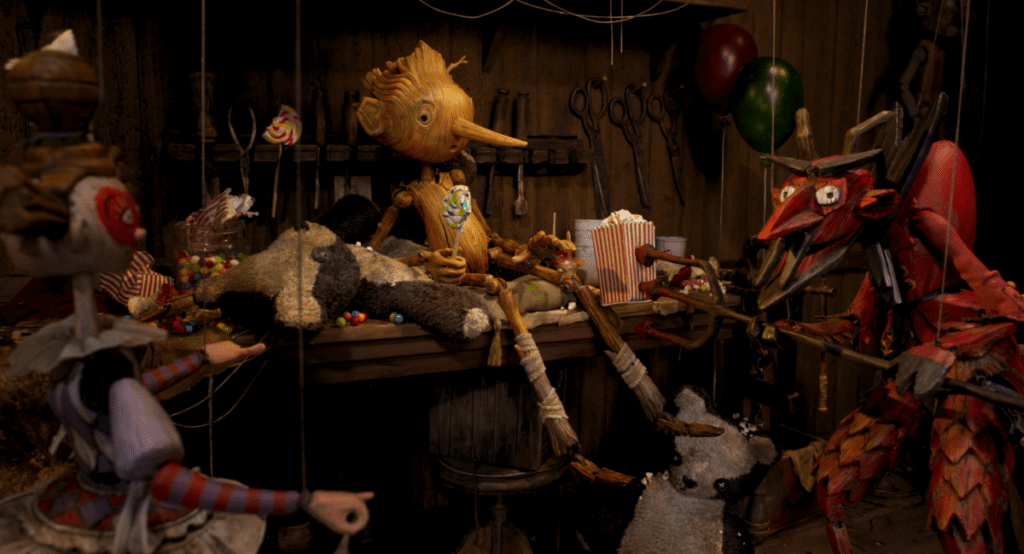
Another stunning detail is that in certain scenes, the hairs on their puppet heads were actually moving as they talked. This should be completely impossible because the hair is part of the wooden headpiece! The moving hairs must have been a detail added in post-production or manually added to the puppets on specific frames.
One of my favorite character elements was Pinocchio’s heart being designed as a hole that becomes a home. The brilliant design idea is perfected when that hole becomes lit by Sebastian’s warmth. It also serves as an indicator of Pinocchio’s growth over the movie, because the content of Pinocchio’s heart literally evolves because of his connection to Sebastian. The home-in-the-heart is also a prime example of how the film’s character design ties to the themes of the story since this design inherently emphasizes the unique strengths of Pinocchio’s natural body.
If this version of Pinocchio was 2D animation or live-action, none of Pinocchio’s emotionality would have felt as real. We are literally seeing a puppet brought to life, but it’s not jarring or strange because our sense of disbelief is already lifted with the rest of the world made of puppets coming to life anyways.
If this had been crafted in any other format, Pinocchio would have been visually otherized, breaking the core conceit of del Toro’s vision. Everything being made out of wood adds so many intentional layers to the experience. Even though his visual design is different, Pinocchio is literally the same as everyone else on the inside, which is a core message of the film. Perhaps the greatest irony is that while all the characters are literally wooden puppets, only the Pinocchio puppet looks the truest to his original form of a tree.
The tone of Guillermo del Toro’s Pinocchio
I love how so much of the movie plays well for kids and adults in totally different ways. Instead of watering it down to broadly appeal to anyone, it specializes specifically for everyone. I loved the silly jokes, even when they didn’t always land for me, because it is so important that this movie is accessible for kids.
Kids watching it might be as blissfully ignorant as Pinocchio going into the movie, but then they learn these lessons with him through the movie. In this way, the film operates similarly to a classic Disney movie like Tarzan. In both films, there’s meaningful commentary about the darkness of the world incorporated into the fabric of the film. As a child, you don’t really understand what the humans are doing in Tarzan, but you understand they’re hurting the gorillas. Pinocchio handles its darker themes in the same way.
Some of the childish jokes surprised me, but I think that’s a strength of the film. It does a great job of appealing to multiple audiences. It’s never kiddie enough to be annoying, it mostly reminded me “oh yeah kids are gonna watch this and have a good time too, in a totally different way.” It’s the smart way of making four-quadrant films for every audience member. But of course, GDT didn’t do that to maximize his box office, he did that because he cares about kids too, and he understands the universal potential of this story.
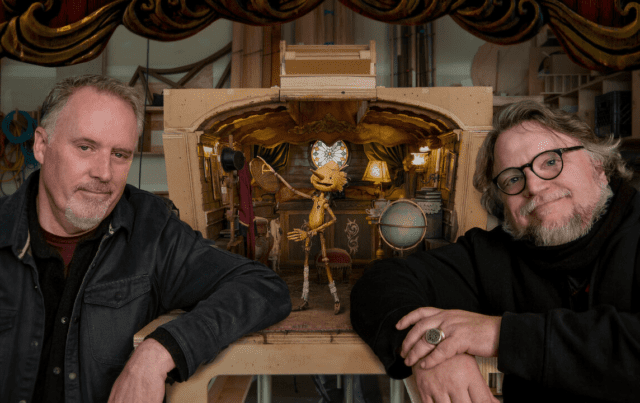
Pinocchio’s earnestness also makes it one of the sappiest del Toro films has ever made (ironic for the movie about a tree boy). And, as usual for the master filmmaker, it works wonderfully because of the depth of del Toro’s sincerity. The seriousness with which he weaves the true highs and lows of human experience into the fantastical story allows the messages to land powerfully because they come with true emotional honesty. Earning its place as a trademark work of magical realism, the fantastical elements of Pinocchio work in perfect harmony with the intense real-world elements to enhance the true human experiences at the core of the film.
I also really liked the musical aspect because it allows the film to fully embrace the range of human emotions and the surrealism already present in the story. Along with the excellent sound design and Alexandre Desplat’s moving score, all these strange magical elements add to the heightened reality. In trademark del Toro fashion, Pinocchio’s fairytale framing creates a dynamic contrast with the incredibly grounded storylines about love, obedience, oppression, abuse, manipulation, survival, loneliness, desperation, sacrifice, found family, rebellion, and acceptance. The two sides of magical realism work hand-in-hand in Pinocchio, earning its place alongside Pan’s Labyrinth and Shape of Water in the filmmaker’s filmography.
The universal message of Pinocchio
I think one of the most interesting things about this version is how they approach the “real boy” aspect of the classic Pinocchio story. Yes, he becomes mortal, but no, he doesn’t get a flesh-and-blood body. Given the way his wooden body is treated throughout the film, I think this is a commentary on self-perception and the world’s perception of us.
Pinocchio never needs to “become” someone else. He doesn’t need a magical fairy transformation to complete his character arc. He is who he is, and he’s different from everyone else, and that’s the state of his reality. But his body gives him unique strengths, the world learns to accept him, and he self-actualizes with the gifts he was given at birth by his father.
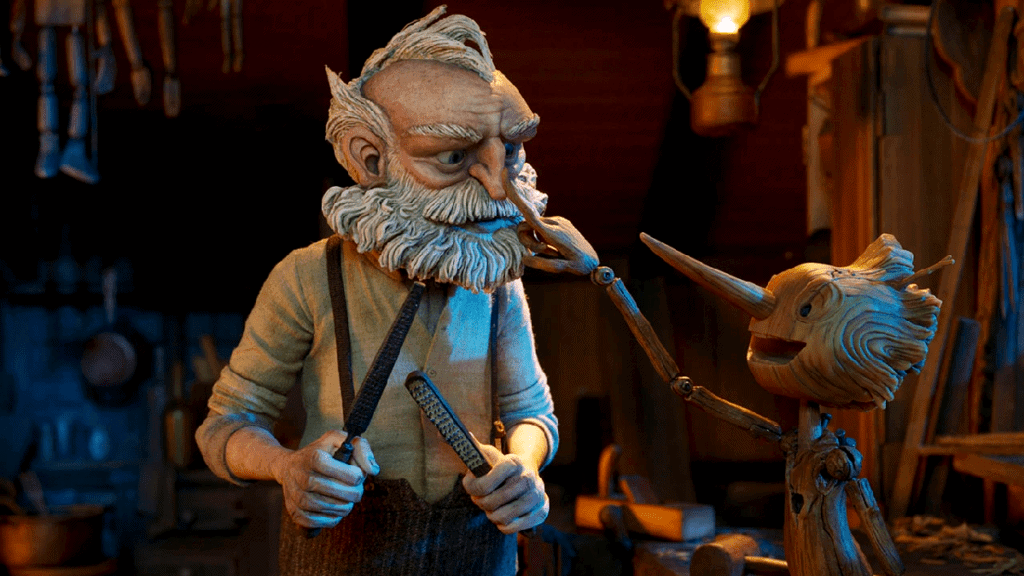
Pinocchio begins the movie by wishing he could be like the others, but at the same time also tells the Podestà officer that his own body is made of flesh. I think this is an intentionally complicated sense of self-aware otherness. He is obviously different on the outside, but he sees himself just as human as anyone else. It’s so universally applicable to anyone who’s ever been a social minority: physical impairments, skin color, family culture, body shape, etc… Pinocchio represents every minority at once.
By not doing the traditional transformation, the new message is clear: “You don’t need to assimilate into the majority to fit in. You are human, your heart is human, your pain is human, and your goodness is human. Go have a great life, and make the most of the world with your unique gifts. We can all have freedom, happiness, and love by being who we are. A good heart is the only universal element that matters. You don’t need to change to be like everyone around you. You fit in by learning to be you.”
As Guillermo del Toro himself said,
“To me, it’s essential to counter the idea that you have to change into a flesh-and-blood child to be a real human. All you need to be human is to really behave like one, you know? I have never believed that transformation [should] be demanded to gain love.” – (via Vanity Fair)
The ending of Pinocchio
I left the film with one sad question: Who would do Pinocchio’s maintenance now? But then I realized, Pinocchio learning to be independent and take care of himself is the equivalent of becoming an adult. On top of all the other brilliant layers of themes, tones, styles, and genres, this finale signifies that Guillermo del Toro’s Pinocchio is also a coming-of-age story. In this short runtime, we get the full journey from birth to adulthood, with all the pain, joy, love, and responsibility that comes along the way.
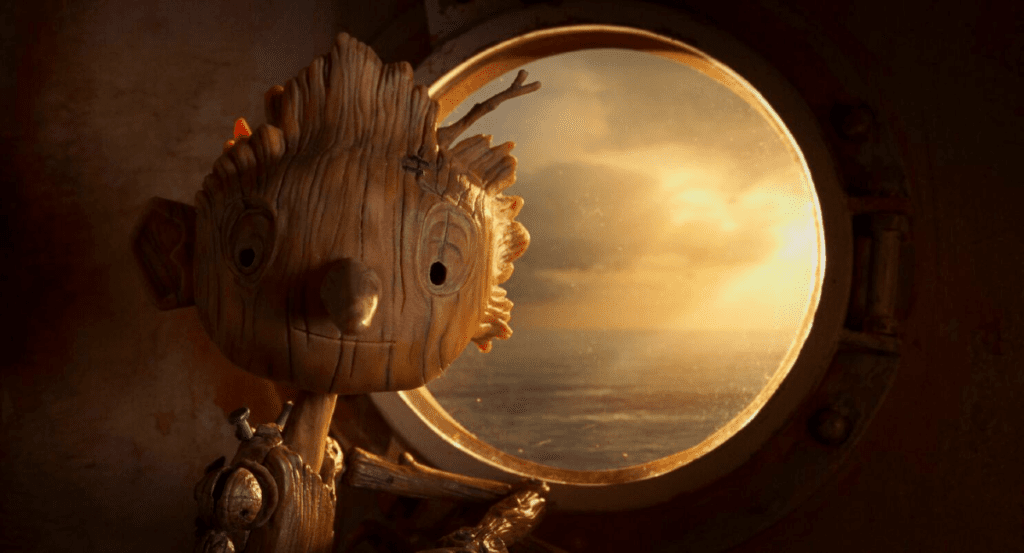
The ending also made me think of pets and loved ones passing away. You know it’ll happen, and you know roughly when it’s coming, and it always hurts. But you still celebrate the time you had and hold onto your love for them as you move forward in life. It’s a natural part of life and Pinocchio coming to terms with the losses of his friends is so true to our learned experience as adults and a powerful lesson for kids too. Juxtaposed with the child we meet at the beginning of the movie, Pinocchio has matured into full adulthood by the end of the film. He is us.
Overall, these are just a few of my thoughts. I have so much more I could say, but like a wooden boy come to life, the film can truly speak for itself. I hope it speaks to you too.
My rating for this film:
★★★★½ / ♥♥♥♥♥
Have you watched Guillermo del Toro’s Pinocchio on Netflix yet? What did you think? Let us know on Twitter or The Cosmic Circus Discord!

